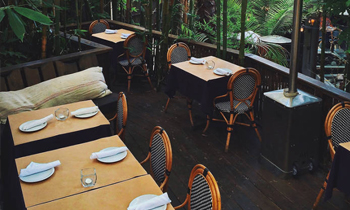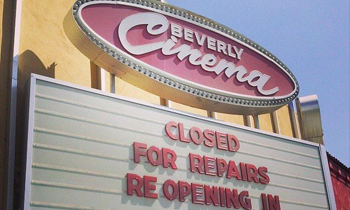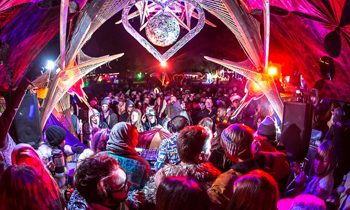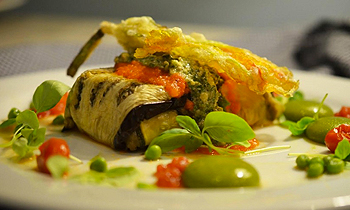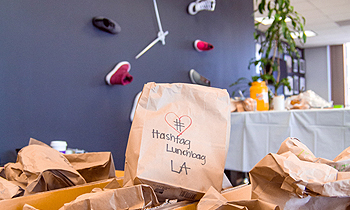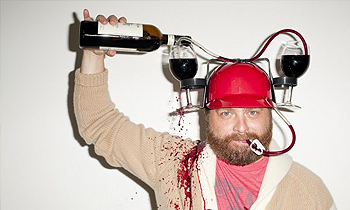There are apps for driving, apps for tickets, apps for travel. Apps for everything! But what happens when you want to surprise your loved ones (or yourself) with a trip or a date and everything’s taken care of except the food reservations? On a recent afternoon, we found ourselves deep in conversation with online reservation app, Table 8, co-founder Santosh Jayaram. The discussion ran from Santosh’s upbringing as one of the first executive hires at Twitter to his fellow partner, co-founder Pete Goettner’s time at DigitalThink. He discussed date nights, the “drive-by foodie” and dining expectations in the age of social media and gave us an inside scoop of what seems to be the deeply approachable mindset — one that has two former Silicon Valley executives becoming part of the notoriously unforgiving restaurant business.
Founded in 2013, Table 8 has already set off in San Francisco, New York and Argentina. As of September ’14, Table 8 is also in Los Angeles—with a mind-boggling twenty additional markets opening globally by mid- 2015. Sky rocket, anyone? In their own words, Table 8 was started by “Data people, not food people. We came into the restaurant business sideways.” Sideways, perhaps, but they fell in love with it because on a personal level they were affected by a gap in the dining marketplace. Specifically, they lead busy lives filled with travel and familial and professional obligations. Combined, these factors don’t seem to leave a lot of room for spontaneity. And it is spontaneity as well as a desire to enjoy dining and live “in the moment,” that appear to be the driving concept behind their brand.
Take Santosh, for example. He has a standing Tuesday and Thursday date night with his wife. He also contends with the schedules of two kids and running a business. There are times where he just wants to be impulsive while also having access to a fantastic restaurant. Let’s face it—unless you’re a friend of a chef, spontaneity isn’t always an option—thus the need in the marketplace for Table 8 obvious.
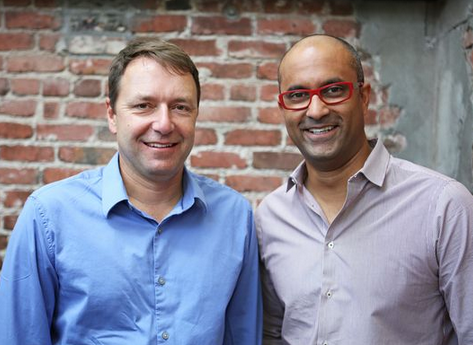
Up until now, the food dialogue has centered (probably too much) around what appears to be the often inconsistent opinions of user-generated evaluations like Yelp and Open Table. And while there’s nothing wrong with this, those business models also don’t tell us much of anything reliable about popular or destination driven restaurants, and they certainly don’t seem to get us tables at Michelin-starred, fine dining or other celebrated restaurants. Because of these experiences, Santosh and Peter began to understand that unless you lived in a city and could text a Maitre D’ or unless you knew the chef and simultaneously paid attention to bloggers and reviewers, you were sort of out of luck. Hiring advisors and a few employees, raising enough capital and not banking on salaries for the first few years, the actual execution of their app was remain to be seen; all they knew was they wanted to keep it simple.
In laymen’s terms, this means they take a look any given city and ask themselves if there’s a critical mass of great restaurants. According to Santosh, “If there is, is there a critical mass of people patronizing those restaurants? Then we look at each particular city [and ask ourselves], is it a town with a great appreciation for food?” Part of this assessment, the identification and interpretation of trends is performed internally. From a technical standpoint, Santosh discusses an interesting algorithm which they’ve created that finds out how open the restaurants are, how soon the reservations run out, and the cancellation policies. They then go through a painstaking three to six months worth of data per restaurant, per city.
If this sounds a massive endeavor, it certainly is. But they’re refreshingly realistic about it. Santosh recognizes that they’ll probably never have as much inventory as an Open Table because, specifically, they’re working with a subset of the restaurants on Open Table. Categorically they’re cavassing the fine dining and new and most sought-after restaurants in multiple places. Thus, for a small reservation fee (which they share with their restaurant partners) that ranges between $0 and $30, their subscribers get last-minute access to restaurants in cities where someone most likely would have to be a “friend” of the restaurant to get into. And, once again, between family and travel and work, planning ahead and/or being a friend of the restaurant isn’t necessarily a realistic option for most people. According to Santosh, the old reservation process is a flawed one. For most people if they feel like they can’t get in somewhere, they simply won’t try or even show up. Which is why, for Santosh and for Table 8, “It’s important to give people a sense that when they walk into a restaurant, they have someone representing them.”
Maybe it’s a result of this day and age of social media that we have so much access to palates and places around the world at the click of a button but not necessarily the relationships. “People want to click a button and have something done. This wasn’t the case five years ago, because the whole attitude towards food has changed. And with the celebrity chef, appetites are changing,” Santosh explains. Five years from now, they don’t want to be looked at as just a reservation app. They want to be known for ‘bringing access and spontaneity back to eating out,’ and with the amount of time, statistics and educated opinions they’ve factored in, Table 8 might just have the potential to change the way the dining experienced is viewed.

